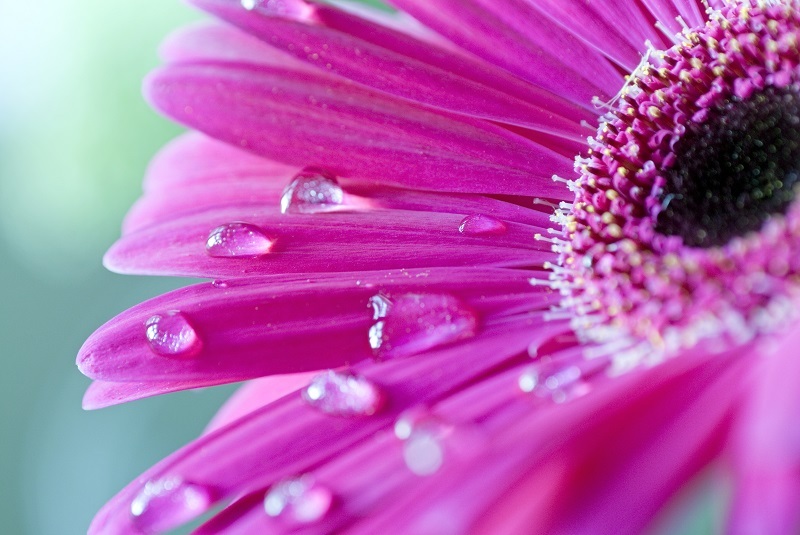Mastering Orchid Care: A Complete Guide
Posted on 10/09/2025
Mastering Orchid Care: A Complete Guide
Orchids have long mesmerized plant enthusiasts and hobbyists alike with their incredible variety, exquisite blooms, and exotic appearance. These sophisticated beauties may seem mysterious, but with the right knowledge, anyone can master orchid care. This comprehensive guide will demystify orchid care, providing you with insider tips, detailed instructions, and essential information to keep your orchids thriving all year round.
Understanding Orchids: A Brief Introduction
Before diving into the specifics of orchid care, it's vital to understand what makes the orchid family (Orchidaceae) unique. There are over 25,000 species and more than 100,000 hybrids, making orchids one of the largest and most diverse plant families on earth. Their presence spans nearly every continent, each bringing a unique shape, color, and care requirement.
Why Orchids?
- Unparalleled variety and beauty
- Long-lasting, striking flowers
- Symbolic meaning in cultures worldwide
- Surprisingly adaptable and resilient
Learning how to care for orchids isn't just for experts--with the right approach, beginners can also enjoy healthy, blooming plants at home.

Setting the Foundations: Choosing the Right Orchid
An integral part of successful orchid care starts with choosing the right type for your environment and experience level. While dozens of genera are available, some are more suited for beginners:
Best Orchids for Beginners
- Phalaenopsis (Moth Orchid) - Known for their forgiving nature and abundant blooms
- Cattleya - Famous for their colorful, fragrant flowers
- Dendrobium - Adapts well to home conditions
- Paphiopedilum (Lady's Slipper) - Unique slipper-shaped blooms and low light tolerance
Tip: When buying an orchid, choose a healthy plant with strong, green leaves, and firm roots.
Orchid Light Requirements: Finding the Perfect Spot
Light plays a pivotal role in orchid plant care. Adequate light intensity and duration are essential for healthy growth and prolific blooming. Unlike some houseplants, most orchids do not tolerate direct sunlight, which can scorch their leaves.
Light Guidelines for Orchids
- East-facing windows are ideal for most varieties, offering gentle morning light.
- South or west windows may require sheer curtains to prevent burning.
- Look for yellowing leaves (too much light) or dark green, weak leaves (too little light) as indicators for adjustment.
- Supplement with grow lights in low-light environments.
Most orchids thrive in bright, indirect light. Aim for 12-14 hours per day for optimal orchid growth and flowering.
Watering Your Orchids: Avoiding the Most Common Mistakes
Watering is a frequent stumbling block for many, but mastering it is essential for orchid care success. Orchids differ from other houseplants; overwatering is often more harmful than underwatering.
How to Water Orchids
- Check dryness before watering: Only water when the top inch of the potting mix feels dry to the touch.
- Water thoroughly: Let water flow freely through the pot so all roots are moistened, then allow the pot to drain completely.
- Never let orchids sit in water: Use pots with drainage holes to prevent root rot.
- Reduce watering in winter, when growth slows.
Pro Tip: Water early in the day so leaves dry by night, helping prevent bacterial and fungal issues.
Humidity and Temperature: Creating an Orchid-Friendly Environment
Orchids naturally originate from humid, tropical climates. Adequate humidity and proper temperature are crucial for caring for orchids at home:
Ideal Conditions
- Humidity: Most orchids prefer 40-70% relative humidity.
- Increase humidity with a pebble tray, room humidifier, or regular misting.
- Avoid misting in the late evening to minimize disease risk.
Temperature Ranges for Common Orchids:
- Day: 70-85?F (21-29?C)
- Night: 60-70?F (16-21?C)
Consistency is key to stress-free, robust orchids.
Choosing the Right Potting Mix
Another aspect of mastering orchid care is selecting the right growing medium. Unlike many houseplants, orchids often grow on trees in nature, so their roots need even more airflow.
Best Potting Mixes for Orchids
- Bark-based mixes - excellent drainage and aeration
- Sphagnum moss - retains more moisture; best for climates with low humidity
- Perlite or charcoal - often added for further drainage
Never use regular potting soil for orchids--it compacts and suffocates the roots.
Proper Fertilization for Stunning Blooms
Fertilizing rightly ensures strong growth and beautiful flowers. Orchids need a balanced approach to nutrition:
How to Fertilize Orchids
- Use a balanced orchid-specific fertilizer (such as 20-20-20) for best results.
- Feed orchids "weakly, weekly"--dilute fertilizer to half or quarter strength and apply every week during active growth.
- Flush the potting mix with plain water monthly to prevent salt build-up.
- Reduce feeding when growth slows in winter.
Repotting Orchids: When and How
Orchids require repotting every 1-3 years to refresh their potting medium, promote healthy roots, and accommodate growth. Here's how to do it right:
Signs Your Orchid Needs Repotting
- Poor drainage--water sits on the surface or roots look soggy
- Roots are growing out of pot and overcrowding
- Potting medium looks decomposed or moldy
Steps for Repotting Orchids
- Gently remove the orchid from its pot, taking care not to damage roots.
- Trim away dead or rotted roots with sterile scissors.
- Shake off old medium and rinse roots under lukewarm water.
- Place the orchid in a clean pot and fill with fresh orchid mix, making sure roots have enough support.
- Water lightly and return to its regular environment.
Tip: Repot after blooming to minimize stress on your plant.
The Secret to Re-Blooming Orchids
Many people worry when their orchid flower spikes fade. With the right care and patience, you can encourage your orchid to rebloom:
Steps to Encourage Orchid Reblooming
- Provide a day-night temperature difference of 10-15?F for several weeks in autumn.
- Continue proper watering and feeding routines.
- Remove spent flower spikes just above a node to encourage new stems.
- Check that your orchid is receiving enough light.
- Be patient--some orchids may take months to rebloom.
Common Orchid Problems and Solutions
Even the best-cared-for orchids can encounter issues. Knowing how to spot and resolve them is key to successful orchid gardening:
Typical Orchid Issues
- Yellow leaves - Often a sign of overwatering or excessive direct sunlight
- Mushy roots - Root rot due to poor drainage or overwatering
- Wrinkled leaves - Underwatering or root loss
- No blooms - Insufficient light or lack of temperature variation
- Pest infestations - Monitor for mealybugs, spider mites, and scale, treating with neem oil or insecticidal soap as needed
Orchid Care Throughout the Year
Orchid care is not static--it changes with the seasons. Adjust your routine to meet your orchid's needs:
Seasonal Orchid Care Guide
- Spring/Summer:
- Increase watering and feeding as growth accelerates.
- Provide good airflow and check for pests.
- Autumn:
- Encourage blooming with day-night temperature differences.
- Reduce fertilizer as growth slows.
- Winter:
- Water less frequently, especially for dormant types.
- Keep orchids away from cold drafts and heating vents.
Bonus Tips for Thriving Orchids
- Clean leaves regularly with a damp cloth to remove dust and pests.
- Observe your orchid--each species and growing environment is unique.
- Join orchid clubs or online communities for support and to share experiences.
- Label your orchids by name and date of repotting to track care needs.

Frequently Asked Questions (FAQ) About Orchid Care
How often should you water an orchid?
Generally, water orchids once the top inch of potting media has dried. This can be once a week for many types, but always check first--overwatering is a common mistake!
Why are my orchid's leaves turning yellow?
Yellow leaves usually indicate too much water or excessive sunlight. Make adjustments and monitor your plant's response closely.
When should I repot my orchid?
Repot every 1-3 years, after blooming or when the potting medium breaks down. Signs include poor drainage, mold, or overcrowded roots.
Do orchids need special pots?
Orchid pots must have drainage holes. Clear pots help monitor root health and moisture but are not essential as long as drainage is adequate.
How can I get my orchid to rebloom?
Provide enough light and a day-night temperature difference (especially in the autumn) to trigger blooming. Keep up regular care and be patient!
Conclusion: The Art of Mastering Orchid Care
Mastering orchid care is a deeply rewarding pursuit. With patience, careful observation, and the correct orchid plant care techniques, you can enjoy healthy, vigorous plants and dazzling flowers year after year. By understanding your orchid's unique needs--light, water, humidity, temperature, and nutrition--you'll become a confident orchid grower. Whether you're a beginner or an experienced enthusiast, use this guide as your reference to unlock the beauty and elegance of these exceptional plants. Happy growing!
Latest Posts
Mastering Orchid Care: A Complete Guide
Discover the Art of Floral Preservation in Three Simple Steps
Exploring the Symbolism and Colors of Peony Flowers






